When it comes to speed, the animal kingdom is full of remarkable records and astonishing feats. From the skies to the oceans and across the land, some creatures have evolved to reach incredible velocities. Understanding the fastest animals on the planet not only highlights the extraordinary adaptations of these species but also emphasizes the diverse ways in which speed plays a crucial role in their survival. In this article, we explore the top 15 fastest animals in the world, examining their speeds and unique features.
Fastest Animals in the World
Our list of the top 10 fastest animals in the world includes a diverse range of species, from birds to marine creatures
15. Ostrich: The Speediest Bird on Land
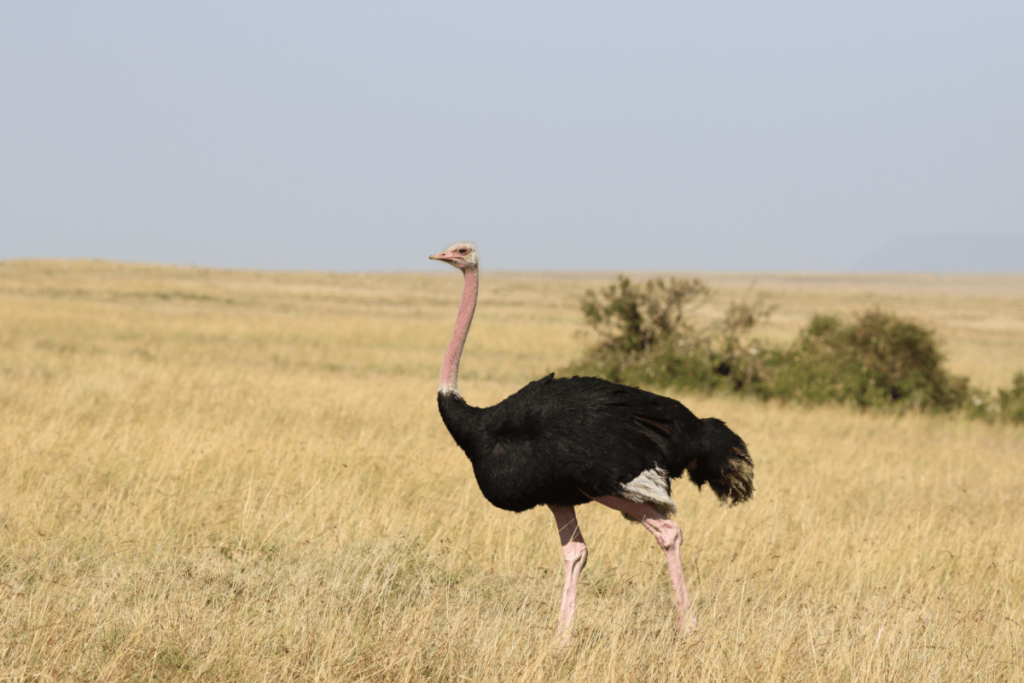
The ostrich is renowned as the fastest bird on land, capable of reaching speeds up to 45 mph (72 km/h). This speed is essential for evading predators and covering vast distances in search of food and water.
Animal Information Table
| Common Name | Ostrich |
| Scientific Name | Struthio camelus |
| Family Name | Struthionidae |
| Type | Bird |
| Speed | 45 mph / 72 km/h |
| Diet | Plants, insects |
| Habitat | Savannas, deserts |
| Conservation Status | Least Concern |
Unique Features
- Adaptations: The ostrich’s long, powerful legs and large, muscular thighs contribute to its impressive speed. Its keen vision helps it detect predators from afar, and its ability to sustain high speeds over long distances aids in its survival.
14. Brown Hare: Quick and Nimble
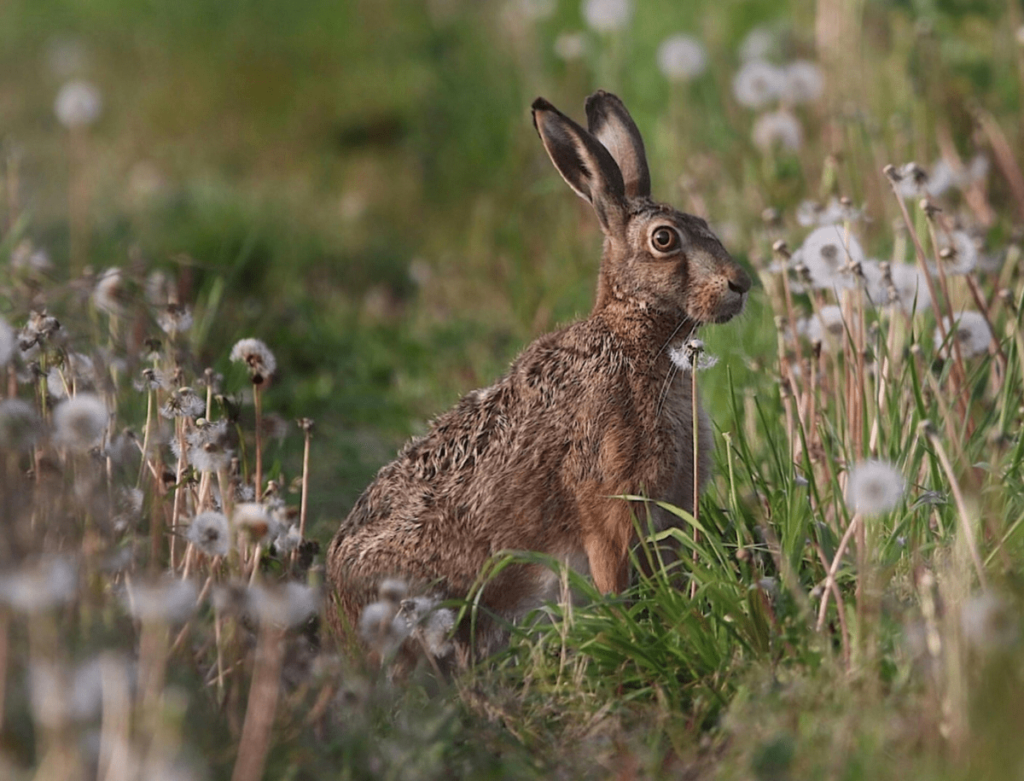
The brown hare is celebrated for its remarkable speed and agility, reaching up to 47 mph (76 km/h). This speed, combined with sharp turns, helps it evade predators effectively.
Animal Information Table
| Common Name | Brown Hare |
| Scientific Name | Lepus europaeus |
| Family Name | Leporidae |
| Type | Mammal |
| Speed | 47 mph / 76 km/h |
| Diet | Vegetation |
| Habitat | Woodlands, fields |
| Conservation Status | Least Concern |
Unique Features
- Adaptations: The brown hare’s powerful hind legs and large ears aid in its high-speed running and acute hearing. Its ability to make quick, sharp turns helps it evade predators in the open field. Additionally, its coloration provides camouflage in its natural habitat.
13. Swordfish: The Agile Marine Hunter
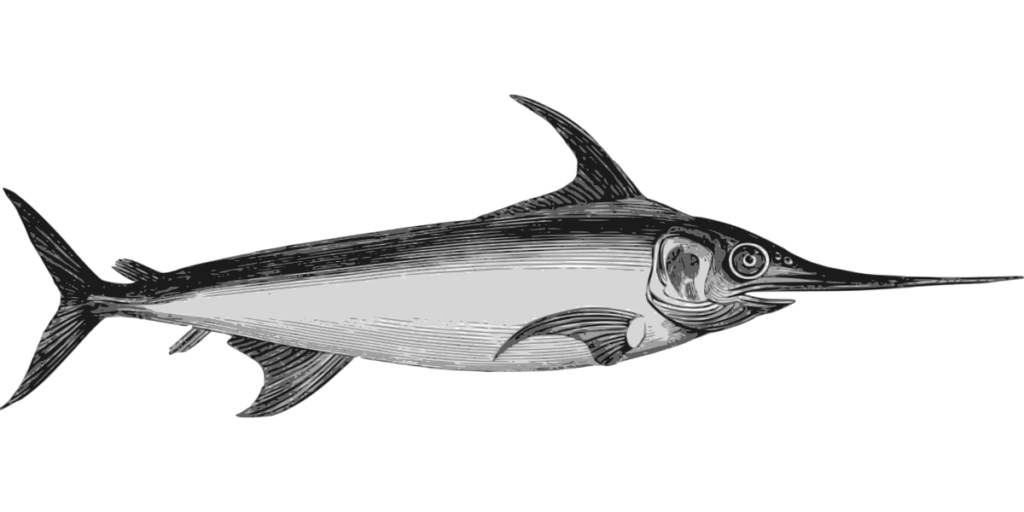
With a long, sword-like bill, the swordfish can reach speeds of up to 60 mph (97 km/h). This speed assists in pursuing prey and evading predators in the open ocean.
Animal Information Table
| Common Name | Swordfish |
| Scientific Name | Xiphias gladius |
| Family Name | Xiphiidae |
| Type | Fish |
| Speed | 60 mph / 97 km/h |
| Diet | Fish, squid |
| Habitat | Atlantic and Pacific Oceans |
| Conservation Status | Least Concern |
Unique Features
- Adaptations: The swordfish’s long, flattened bill is used for slashing prey and defending against predators. Its streamlined body and powerful tail allow it to swim at high speeds, making it an effective predator in its marine environment.
12. Pronghorn Antelope: The Second Fastest Land Animal
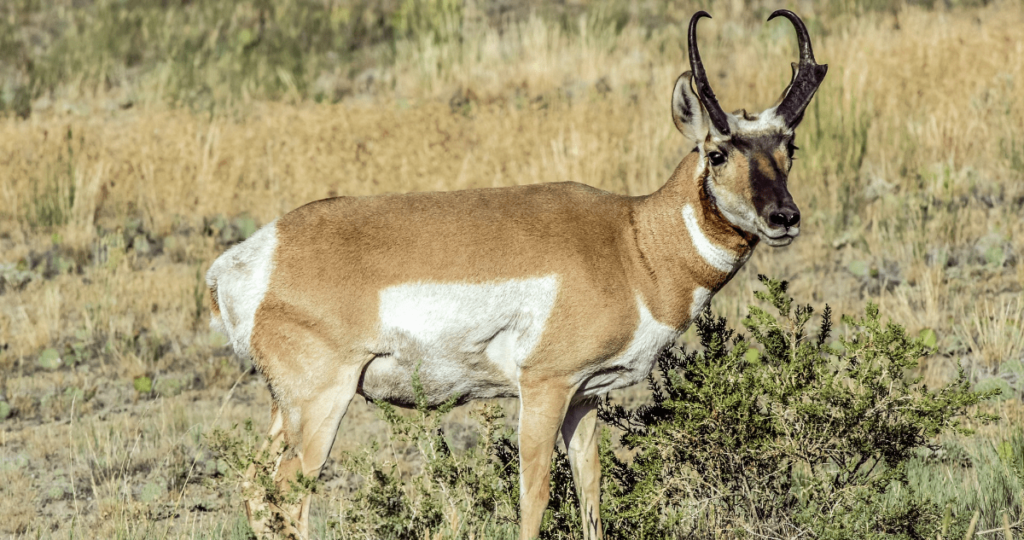
The pronghorn antelope is the second fastest land animal, capable of reaching speeds of up to 55 mph (88 km/h). This speed is crucial for evading predators and covering large distances in search of food and water.
Animal Information Table
| Common Name | Pronghorn Antelope |
| Scientific Name | Antilocapra americana |
| Family Name | Antilocapridae |
| Type | Mammal |
| Speed | 55 mph / 88 km/h |
| Diet | Plants |
| Habitat | Grasslands, deserts |
| Conservation Status | Least Concern |
Unique Features
- Adaptations: The pronghorn’s slender, aerodynamic body and large, muscular legs enable high-speed running. Its large nasal passages help in cooling the air during high-speed chases, and its keen eyesight allows it to spot predators from afar.
11. Gyrfalcon: Fast and Agile in Flight
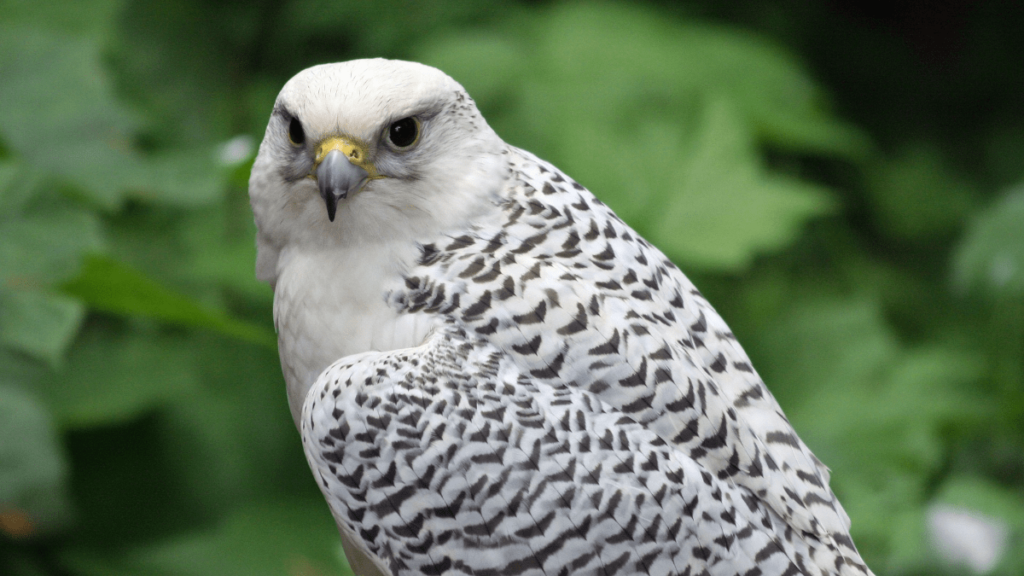
The gyrfalcon, the largest of the true falcons, can reach speeds of up to 55 mph (89 km/h) during level flight. Its powerful build and agility make it an effective hunter in various environments.
Animal Information Table
| Common Name | Gyrfalcon |
| Scientific Name | Falco rusticolus |
| Family Name | Falconidae |
| Type | Bird |
| Speed | 55 mph / 89 km/h |
| Diet | Birds, small mammals |
| Habitat | Arctic and subarctic regions |
| Conservation Status | Least Concern |
Unique Features
- Adaptations: The gyrfalcon’s robust body, strong wings, and powerful talons make it a formidable predator. Its adaptability to different environments, from arctic tundras to open landscapes, highlights its evolutionary success as a top predator.
10. Anna’s Hummingbird: The Fastest Hummingbird
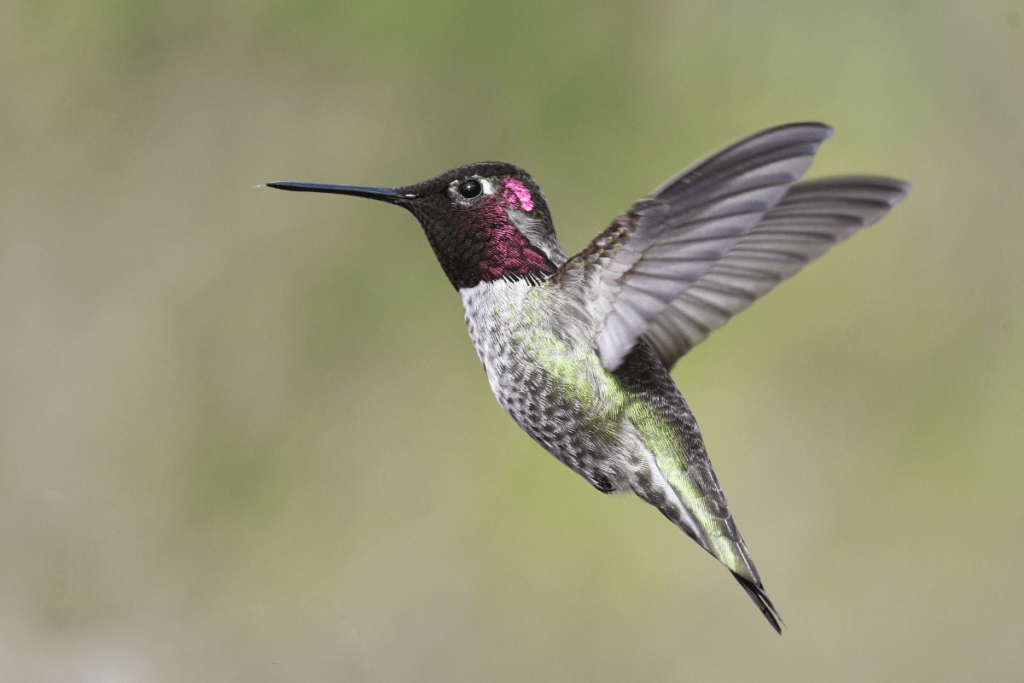
Anna’s hummingbird is one of the Top 10 fastest animal in the world. It is known for its rapid flight, capable of reaching speeds of up to 34 mph (55 km/h). Its incredible agility and speed are essential for maneuvering among flowers and catching insects.
Animal Information Table
| Common Name | Anna’s Hummingbird |
| Scientific Name | Calypte anna |
| Family Name | Trochilidae |
| Type | Bird |
| Speed | 34 mph / 55 km/h |
| Diet | Nectar, insects |
| Habitat | Gardens, woodlands |
| Conservation Status | Least Concern |
Unique Features
- Adaptations: Anna’s hummingbird has specialized wing muscles and an incredibly high metabolism that support its rapid, hovering flight. Its iridescent feathers reflect sunlight, adding to its dazzling appearance. The hummingbird’s ability to hover allows it to access nectar from flowers that other birds cannot reach.
09. Sailfish: The Speedster of the Ocean

The sailfish, recognized for its distinctive sail-like dorsal fin, can achieve speeds of up to 68 mph (110 km/h). This speed is crucial for hunting and escaping predators in the ocean.
Animal Information Table
| Common Name | Sailfish |
| Scientific Name | Istiophorus platypterus |
| Family Name | Istiophoridae |
| Type | Fish |
| Speed | 68 mph / 110 km/h |
| Diet | Fish, squid |
| Habitat | Tropical and subtropical oceans |
| Conservation Status | Least Concern |
Unique Features
- Adaptations: The sailfish’s streamlined body and long, sharp bill help it cut through the water at high speeds. Its sail-like dorsal fin can be raised or lowered to reduce drag, enhancing its speed and agility.
08. Cheetah: The Ultimate Land Speedster
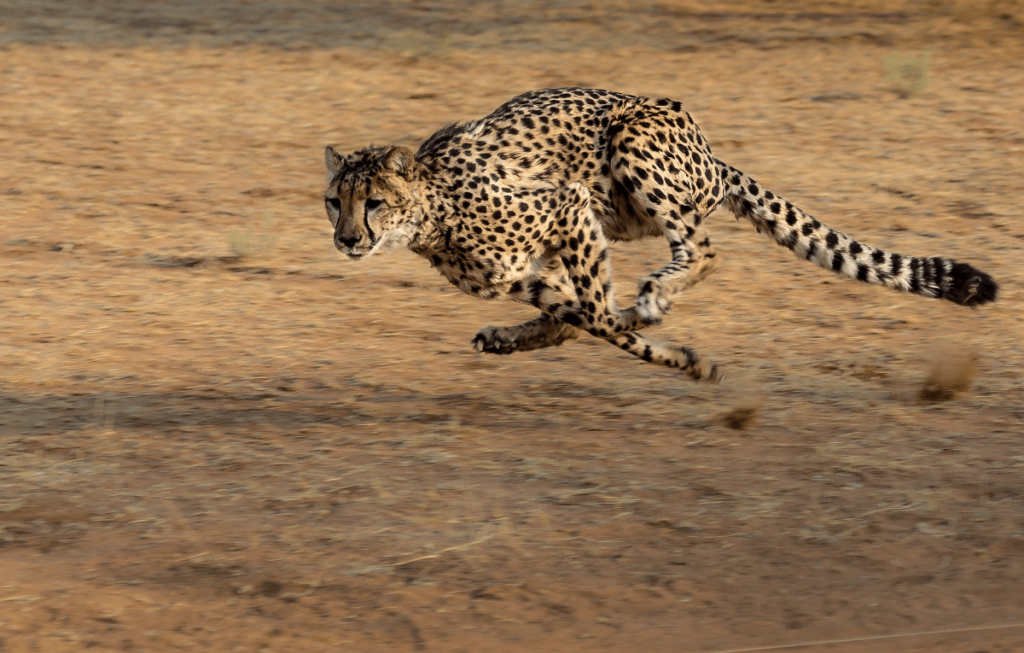
When we think of the fastest animals, the Cheetah immediately comes to mind due to its incredible running speed. The cheetah is renowned as the fastest land animal, capable of reaching speeds of up to 60-70 mph (97-113 km/h) in short bursts. This incredible speed is vital for hunting and escaping predators. Cheetah is also one of the Top 10 Largest Cat Species in the World.
Animal Information Table
| Common Name | Cheetah |
| Scientific Name | Acinonyx jubatus |
| Family Name | Felidae |
| Type | Mammal |
| Speed | 60-70 mph / 97-113 km/h |
| Diet | Ungulates |
| Habitat | Grasslands, savannas |
| Conservation Status | Vulnerable |
Unique Features
- Adaptations: The cheetah’s slender body, long legs, and flexible spine allow for exceptional acceleration and speed. Its large nasal passages and lungs support high oxygen intake during sprints, and its sharp claws and keen eyesight aid in tracking and capturing prey.
07. Golden Eagle: The Fastest Bird of Prey
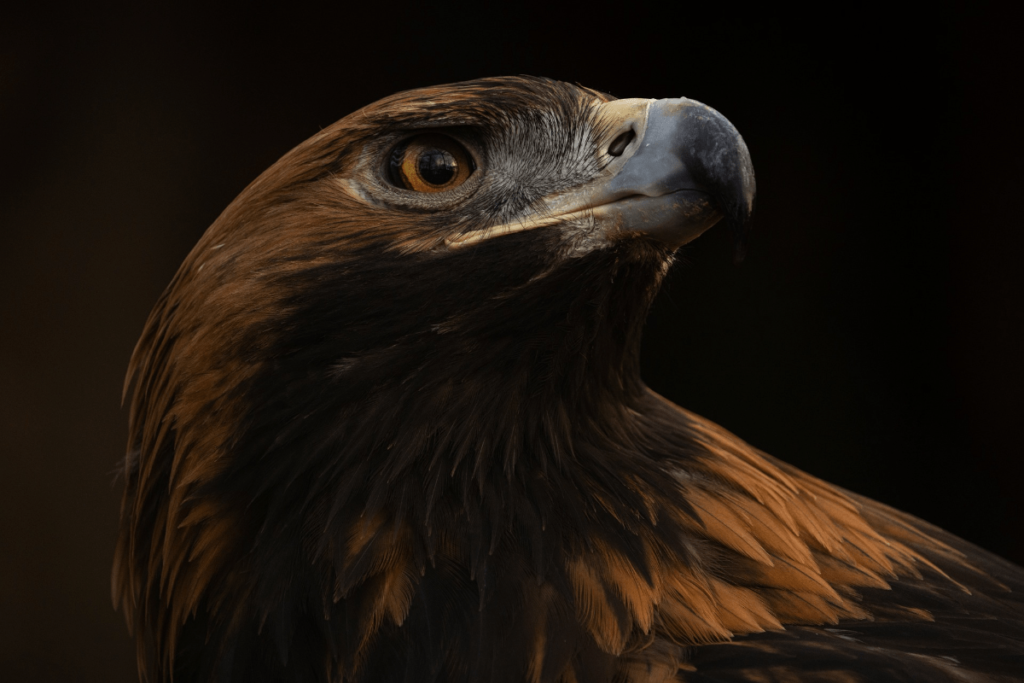
The golden eagle can reach speeds of up to 75 mph (120 km/h) in level flight. Its powerful build and sharp talons make it a formidable predator in its habitat. Its fast speed is one of the Secrets Behind Eagle’s Hunting Strategies
Animal Information Table
| Common Name | Golden Eagle |
| Scientific Name | Aquila chrysaetos |
| Family Name | Accipitridae |
| Type | Bird |
| Speed | 75 mph / 120 km/h |
| Diet | Mammals, birds |
| Habitat | Mountainous regions, open country |
| Conservation Status | Least Concern |
Unique Features
- Adaptations: The golden eagle’s powerful wings and sharp talons make it an efficient hunter. Its keen eyesight allows it to spot prey from great distances, and its strong flight muscles enable sustained high-speed chases.
06. Black Marlin: A Master of Speed

In discussions about the fastest animals, the Black Marlin’s swift movements in the ocean often stand out. The black marlin, known for its speed and agility, can swim at speeds of up to 82 mph (132 km/h). It is one of the fastest animal. Its streamlined body and powerful tail make it a swift predator in the ocean.
Animal Information Table
| Common Name | Black Marlin |
| Scientific Name | Istiompax indica |
| Family Name | Istiophoridae |
| Type | Fish |
| Speed | 82 mph / 132 km/h |
| Diet | Fish, squid |
| Habitat | Tropical and subtropical oceans |
| Conservation Status | Least Concern |
Unique Features
- Adaptations: The black marlin’s streamlined shape and robust tail allow it to swim at high speeds. Its bill helps in catching prey and navigating through the water with minimal resistance.
05. Spur-Winged Goose: The Fastest Waterfowl
The spur-winged goose, the fastest of all waterfowl, can reach speeds of up to 88 mph (142 km/h). This impressive speed helps it evade predators and migrate across long distances.
Animal Information Table
| Common Name | Spur-Winged Goose |
| Scientific Name | Plectropterus gambensis |
| Family Name | Anatidae |
| Type | Bird |
| Speed | 88 mph / 142 km/h |
| Diet | Plants, insects |
| Habitat | Wetlands, grasslands |
| Conservation Status | Least Concern |
Unique Features
- Adaptations: The spur-winged goose has powerful wings and a streamlined body that enable high-speed flight. Its long legs and strong flight muscles are adapted for fast, sustained movement and long migrations.
04. Frigate Bird: The Master of Aerial Speed
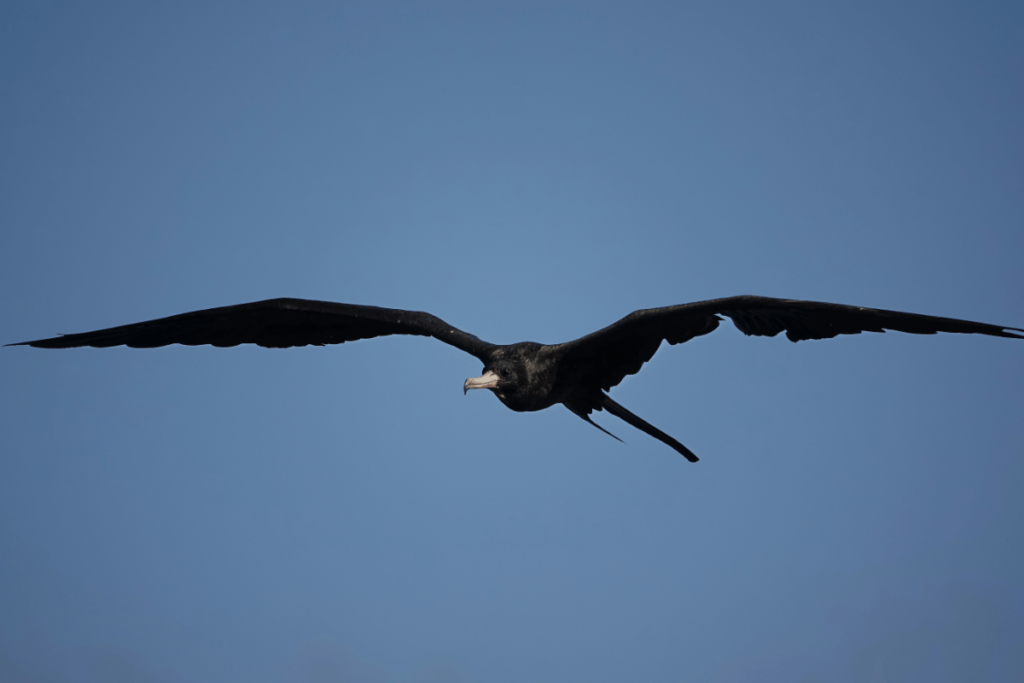
The frigate bird, known for its impressive aerial capabilities, can reach speeds of up to 95 mph (153 km/h). Its large wingspan and lightweight body enable it to soar effortlessly and reach high speeds.
Animal Information Table
| Common Name | Frigate Bird |
| Scientific Name | Fregata spp. |
| Family Name | Fregatidae |
| Type | Bird |
| Speed | 95 mph / 153 km/h |
| Diet | Fish, squid |
| Habitat | Tropical oceans |
| Conservation Status | Least Concern |
Unique Features
- Adaptations: The frigate bird’s large wings and lightweight body enable it to glide and soar for long distances without flapping. Its remarkable speed and agility are used to snatch prey from the ocean surface and avoid potential threats.
03. Mexican Free-Tailed Bat: The Fastest Bat
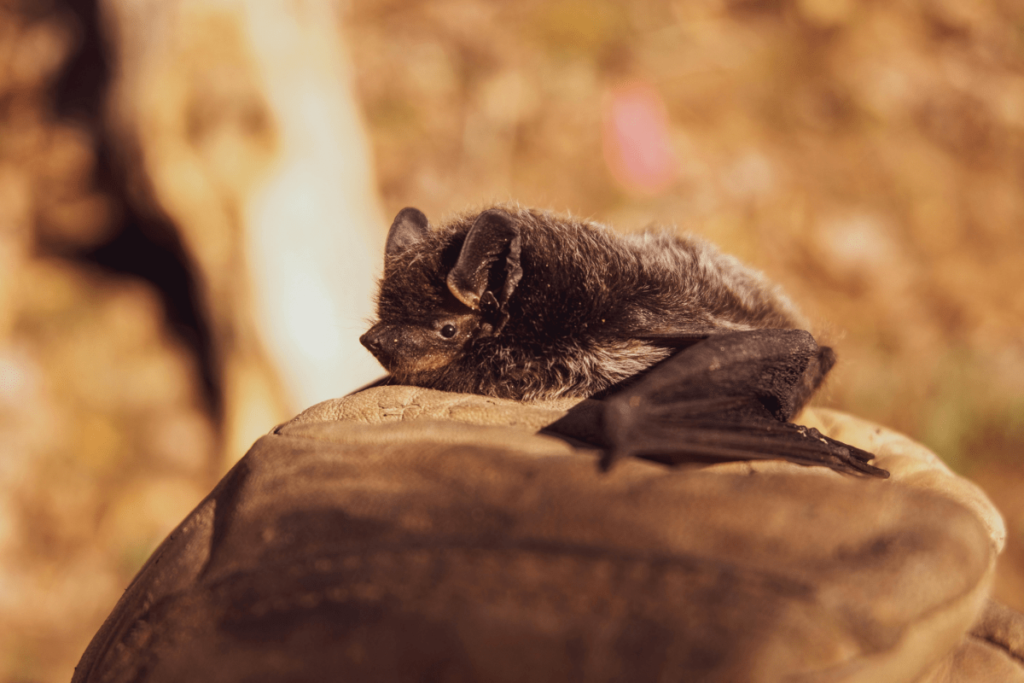
The Mexican free-tailed bat holds the record for the fastest bat, reaching speeds of up to 99 mph (160 km/h). This speed aids in foraging and escaping from predators.
Animal Information Table
| Common Name | Mexican Free-Tailed Bat |
| Scientific Name | Tadarida brasiliensis |
| Family Name | Molossidae |
| Type | Mammal |
| Speed | 99 mph / 160 km/h |
| Diet | Insects |
| Habitat | Caves, buildings |
| Conservation Status | Least Concern |
Unique Features
- Adaptations: The Mexican free-tailed bat’s aerodynamic body and strong wings enable rapid flight. Its ability to hunt and navigate in the dark enhances its survival and foraging efficiency.
02. White-Throated Needletail Swift: The Fastest Bird in Level Flight
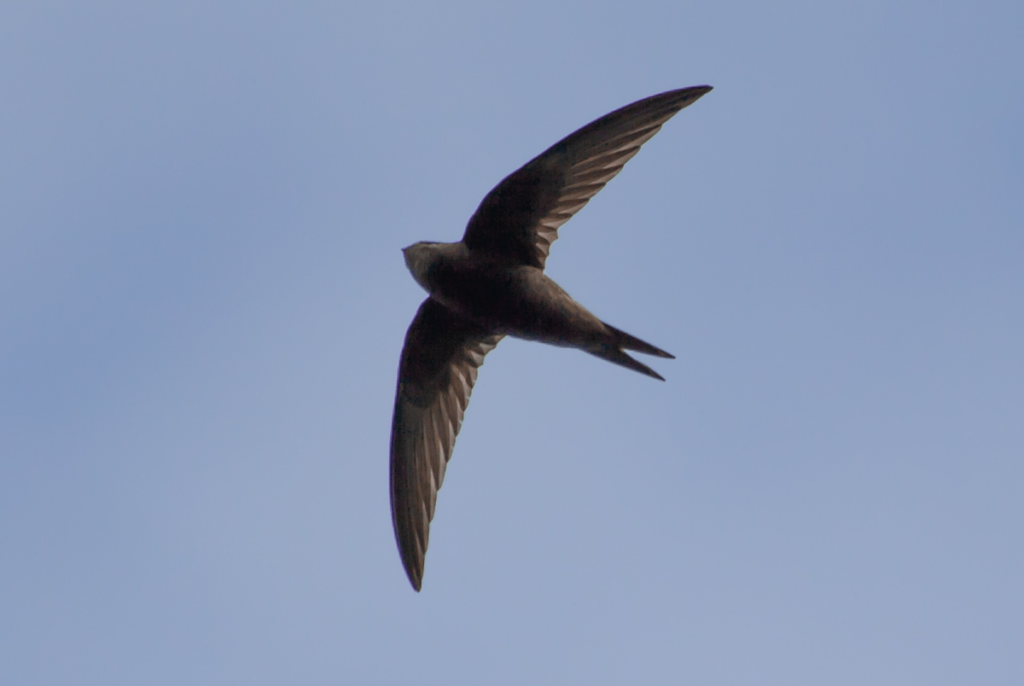
The white-throated needletail swift is renowned for its incredible speed of up to 105 mph (169 km/h) in level flight. This speed is crucial for catching insects mid-air.
Animal Information Table
| Common Name | White-Throated Needletail Swift |
| Scientific Name | Hirundapus caudacutus |
| Family Name | Apodidae |
| Type | Bird |
| Speed | 105 mph / 169 km/h |
| Diet | Insects |
| Habitat | Forests, open skies |
| Conservation Status | Least Concern |
Unique Features
- Adaptations: The swift’s streamlined body and long wings are adapted for high-speed, agile flight. Its ability to catch insects while in mid-air showcases its evolutionary prowess in adapting to a fast-paced lifestyle.
01. Peregrine Falcon: The Fastest Animal in the World
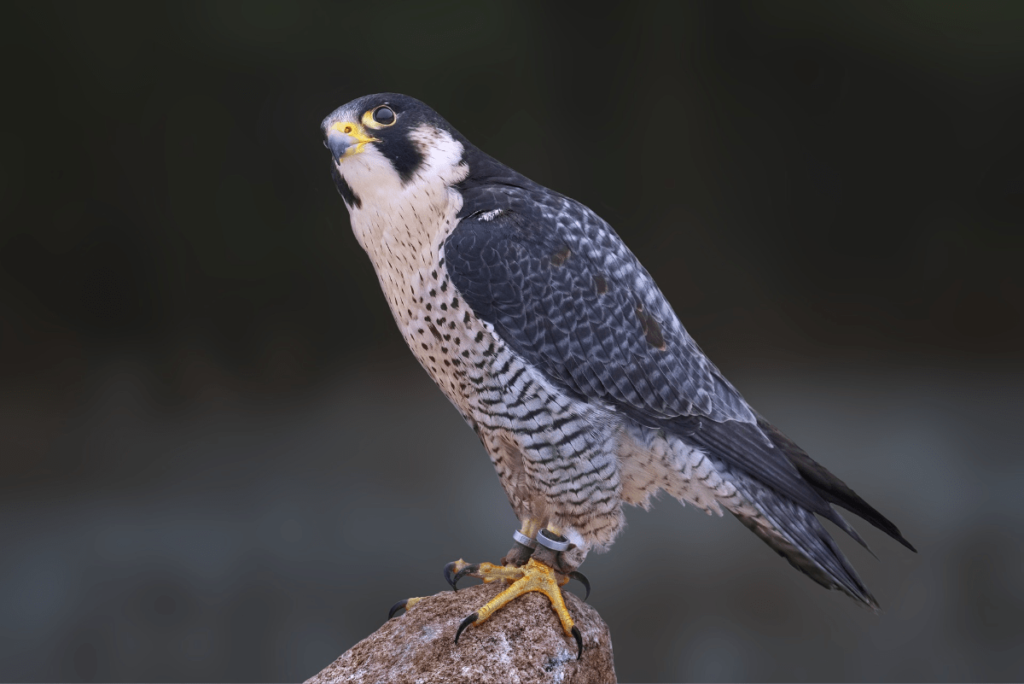
The peregrine falcon holds the title of the fastest animal in the world, achieving speeds of over 240 mph (386 km/h) in a dive. This unparalleled speed makes it an exceptional hunter and an awe-inspiring creature. People often wonder, ‘What is the fastest animal on the planet?’ and the Peregrine Falcon is the definitive answer with its unparalleled diving speed.
Animal Information Table
| Common Name | Peregrine Falcon |
| Scientific Name | Falco peregrinus |
| Family Name | Falconidae |
| Type | Bird |
| Speed | 240 mph / 386 km/h |
| Diet | Birds, insects |
| Habitat | Various environments |
| Conservation Status | Least Concern |
Unique Features
- Adaptations: The peregrine falcon’s streamlined body, powerful wings, and specialized respiratory system enable it to reach incredible speeds during stoops (hunting dives). Its exceptional eyesight allows it to spot prey from great distances, making it a formidable predator.
Conclusion
The fastest animals in the world have evolved extraordinary adaptations that allow them to reach incredible speeds, whether they are sprinting across the land, soaring through the skies, or darting through the water. These remarkable creatures highlight the diversity and ingenuity of the natural world, showcasing the vital role that speed plays in their survival and success. Whether it’s the Peregrine Falcon’s breathtaking dive or the Cheetah’s explosive acceleration, each of these speed kings offers a unique glimpse into the fascinating world of animal adaptations.
If you enjoyed learning about the fastest animals, share this article with friends and let us know which animal amazed you the most in the comments below!


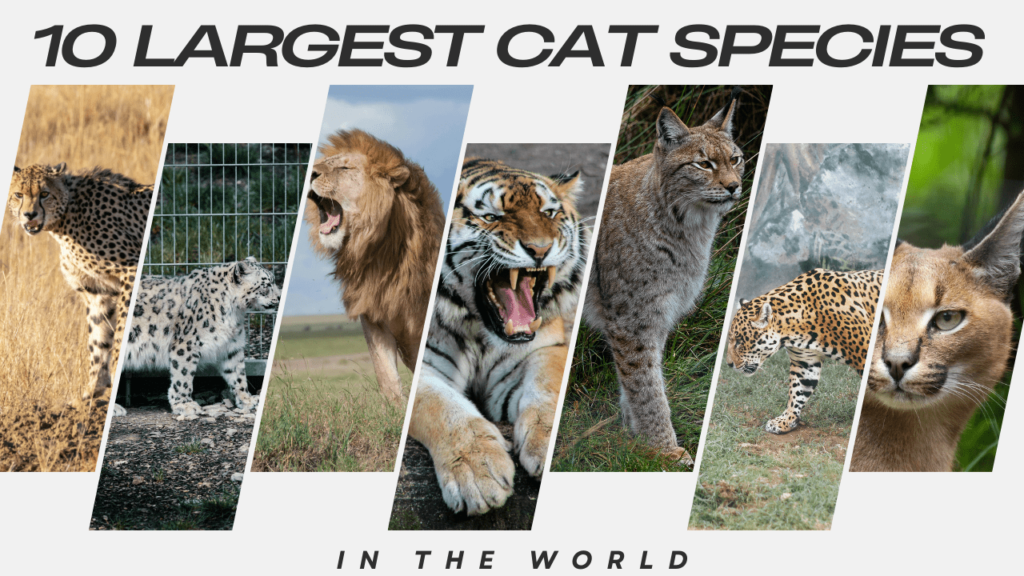


Pingback: How Fast Can a Cheetah Run? The Secrets Behind Nature’s Fastest Runner - primalwildlife.com
Sharing is caring the say, and you’ve done a fantastic job in sharing your knowledge on your blog. It would be great if you check out my page, too, at Webemail24 about Writing.